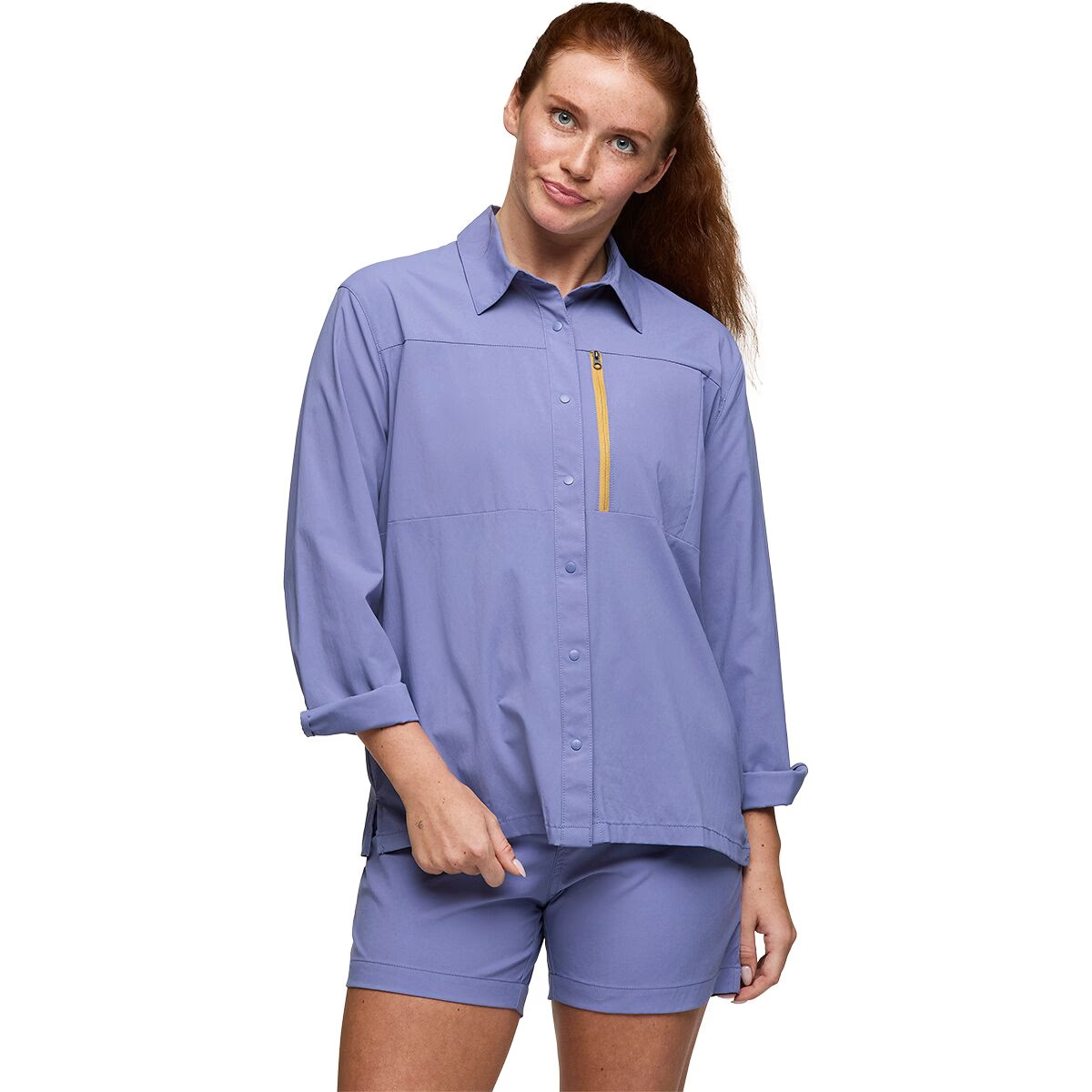17 Solo Camping Tips for Women: How I Learned to Embrace the Wilderness Alone, Stay Safe, and Have the Best Nights Under the Stars
There’s just something special about heading out into nature with nothing but a backpack, a tent, and a bit of curiosity. The idea of solo camping might sound intimidating at first, especially for women, but honestly, that’s what makes it so rewarding.
Learning how to camp alone gave me a sense of freedom, confidence, and peace that’s hard to find anywhere else.

My friends and family definitely raised an eyebrow when I first told them my plans. But solo camping lets me take time for myself, explore at my own pace, and discover strengths I didn’t know I had.
With a few tricks and a bit of planning, camping alone can quickly become the best way to recharge and connect with the outdoors.
1) Always tell a trusted friend or family member your exact camping location and check-in times.
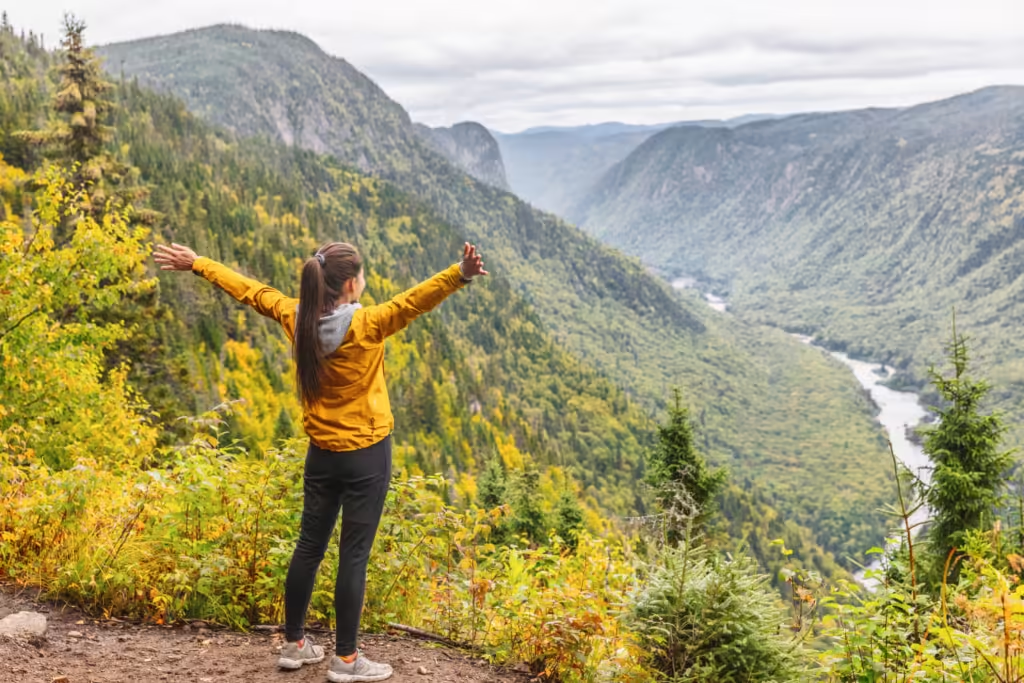
Before I set out on any solo camping trip, I make sure to share my exact location and plans with someone I trust. It might seem like overkill, but knowing someone else has my back gives both of us peace of mind.
We’ve all seen movies where someone forgets to leave a note, right? I avoid that plot twist and just send a text or drop a pin on my phone.
Giving clear check-in times makes it simple for my contact to know I’m safe or if something’s off. I usually agree on check-in intervals, like messaging every evening or before heading out for a hike.
If I don’t check in as planned, my person can reach out or alert help faster. That’s honestly worth its weight in gold.
I don’t need to tell the whole internet where I’m camping, but a friend or family member deserves the inside scoop. For more practical tips, outdoor experts agree this step is essential for solo campers.
2) Choose campsites that are well-trafficked or near roads when you’re just starting out for added peace of mind.

When I was new to solo camping, picking a spot with other campers around made a world of difference. More people nearby means more help if I ever run into trouble, even if it’s just needing a lighter or directions to the bathroom.
Plus, seeing others out there doing the same thing is just plain encouraging. A campground close to a road makes things simpler, too.
I don’t have to haul gear through thick woods or hike a mile just to reach my tent. If I forget something or feel uneasy at night, it’s so much easier to pack up and head out.
Busier campgrounds have a steady flow of folks, which adds a nice sense of security, especially in the beginning. Reserving through official sites lets me see what’s available and read honest reviews.
For example, sites like Recreation.gov let me compare locations, so I can pick well-trafficked spots instead of feeling too isolated.
3) Pack a reliable headlamp for hands-free lighting after sunset.
When the sun finally dips behind the trees, I realize how quickly the world gets dark in the woods. A headlamp becomes my best friend for every little task, from late-night tea brewing to quick bathroom runs.
There’s something comforting about having light exactly where I’m looking. I love the freedom of hands-free lighting, and with a headlamp, it’s so much easier to manage gear or cook a meal.
Fumbling around with a phone flashlight just doesn’t compare, especially when my fingers are cold! A reliable headlamp shines bright, lasts long, and is simple to use.
Keep extra batteries handy or use a rechargeable model if possible. Nothing kills the mood faster than a headlamp running out of juice in the middle of brushing my teeth in the wild. Trust me, I’ve been there!
Waterproof and Dimmable Battery Powered Headlamp for Camping, Hiking, Running, Work, Travel with Red Light Headlamp Mode, Graphite
4) Carry a compact first aid kit that includes essentials like blister pads and antiseptic wipes.
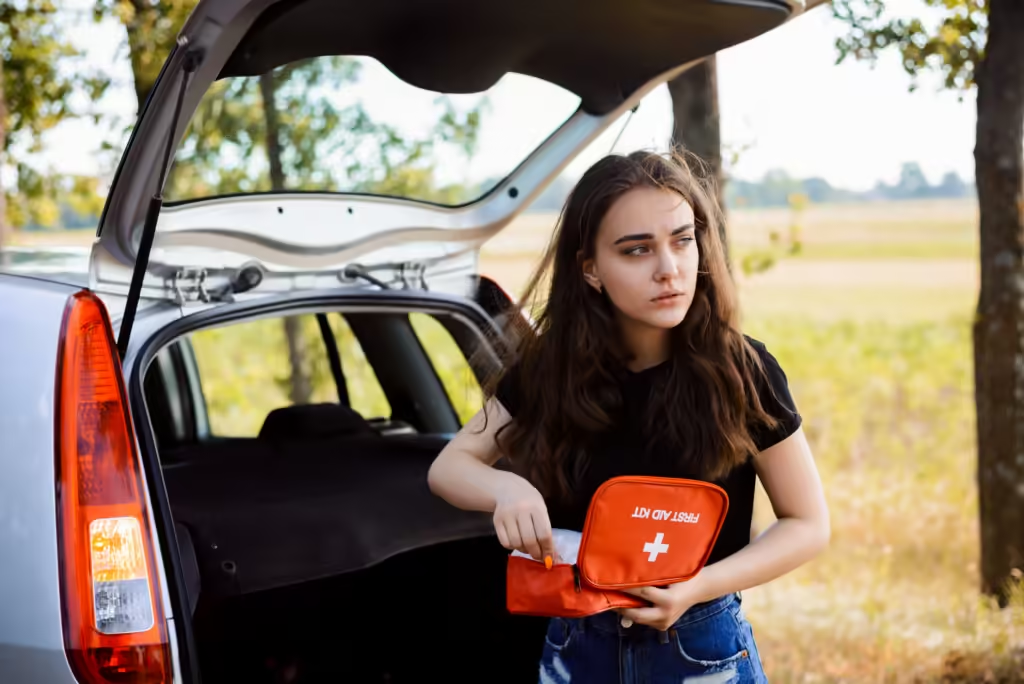
No one really plans to trip over a root or wake up with a surprise blister, but camping loves its surprises. A small first aid kit isn’t just a good idea; it feels like my safety net out in the woods.
I swear by a kit that fits right into my pack. Key things to include are blister pads (because hiking boots don’t always love me back) and antiseptic wipes, which are magic for cleaning cuts or scrapes fast.
Once, after a long hike, I found a blister threatening to ruin the next day, but a single blister pad saved the trip. It’s smart to keep the kit organized so I can grab what I need quickly.
Most kits come in a case that’s easy to toss into a backpack, and I can customize by slipping in personal meds or extra bandages. For more tips on building the perfect pack, there are some detailed lists from first aid experts.
140 Piece Small First Aid Medical Kit for Car, Home, Office, Travel, Camping, Sports, Outdoor, School
5) Bring a portable phone charger or power bank to keep your devices alive, especially for GPS use.

We all know that feeling when the phone battery starts dipping into the red. Suddenly, it’s like starring in my own survival show.
Out in the woods, a charged phone isn’t just for snapping sunsets; it’s my lifeline for maps, emergency calls, and keeping in touch. I always pack a portable power bank that’s reliable and easy to use.
Having at least a 20,000mAh model gives me enough juice for a weekend, even if I take a hundred photos. Some models recharge devices super fast, so I spend more time enjoying the outdoors, less time hovering by my gear.
If I use GPS apps a lot, my battery drains faster, especially in the cold. Power banks are simple to stash in a side pocket, and some even have little built-in lights for late-night tent adventures.
Fast Charger Built-in Super Bright Flashlight (Orange)
6) Use a lightweight, sturdy tent that’s beginner-friendly and weather-resistant.
When I first started camping solo, I quickly learned how important a good tent is. Wrestling with poles in the dark or getting soaked in a sudden rainstorm is not my idea of fun.
That’s why a lightweight and sturdy tent is essential. I love the REI Half Dome because it’s easy to set up, even after a long hike.
I love that it doesn’t take up much space in my pack, but there’s still plenty of room inside to stretch out and unwind at night. There are two doors, so I’m not crawling over my gear every time I want to step outside.
What really won me over is how well it handles rough weather. It holds up in wind and rain, so I feel secure when the forecast isn’t perfect.
There are pockets all over for stashing my headlamp, snacks, and maybe even a secret stash of gummy bears. If you want to see why it’s often called one of the best value and most beginner-friendly tents, it might be worth considering for your next adventure.
An REI member–tested icon, the REI Co-op Half Dome 2-person tent keeps backpacking trips comfortable. Its thoughtful design, easy setup and protective rainfly are built on 45+ years of member input.
7) Wear lightweight, breathable clothing with UV protection to stay comfortable and safe in the sun.
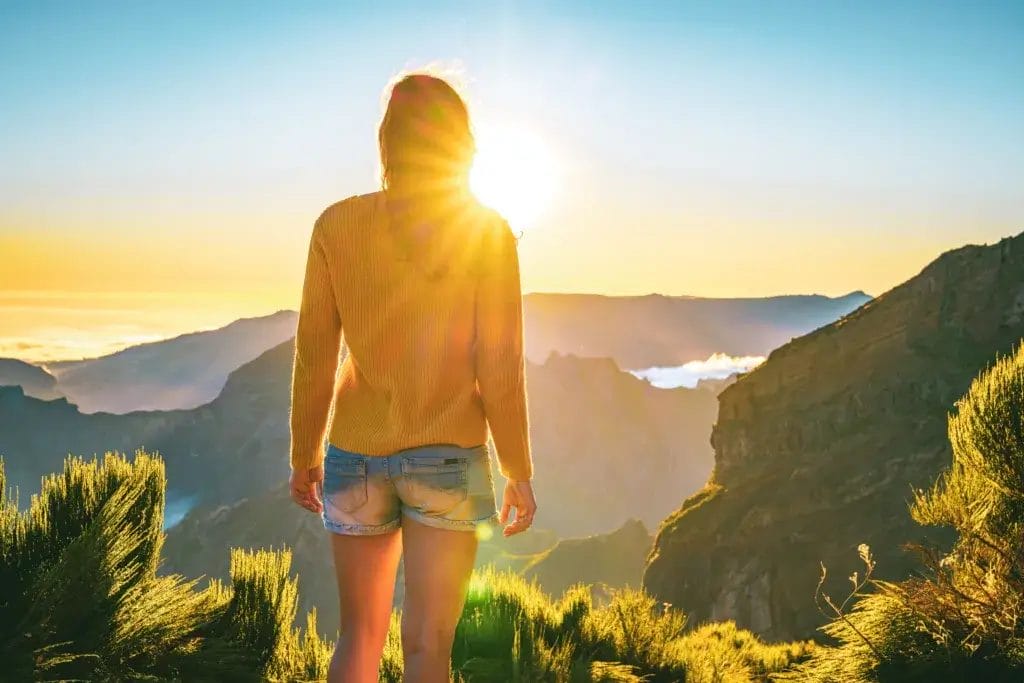
When I’m out in the wild, the sun sometimes feels like both my best friend and my worst enemy. So I always pack clothing that’s lightweight, breathable, and made with UV protection.
Long sleeve shirts and pants keep me cool and shielded, even when it’s hot. Sun-protective shirts with high UPF ratings are total game-changers.
I’m a big fan of the Cotopaxi Sumaco Long-Sleeve Shirt – it looks good, has UPF 50+, and I’ve worn it for hikes and just hanging around camp. If you want more options, there’s a solid guide to the best sun protection clothing out there.
Fabrics that wick away sweat keep me comfortable. Breathable shirts and pants dry fast and don’t stick to my skin, which is a relief when I’m hiking or setting up camp.
No more of that “I’m melting” feeling when the sun is relentless! I always toss in a wide-brimmed hat for extra shade.
From head to toe, I feel protected and ready to soak up the day’s adventure.
Lightweight, breathable long-sleeve shirt for hiking and travel. Built-in UPF 50+ protection shields skin from harmful UV rays. Quick-dry recycled nylon blend offers eco-conscious performance.
8) Trust your intuition – if a spot or person feels off, it’s okay to move on without explanation.
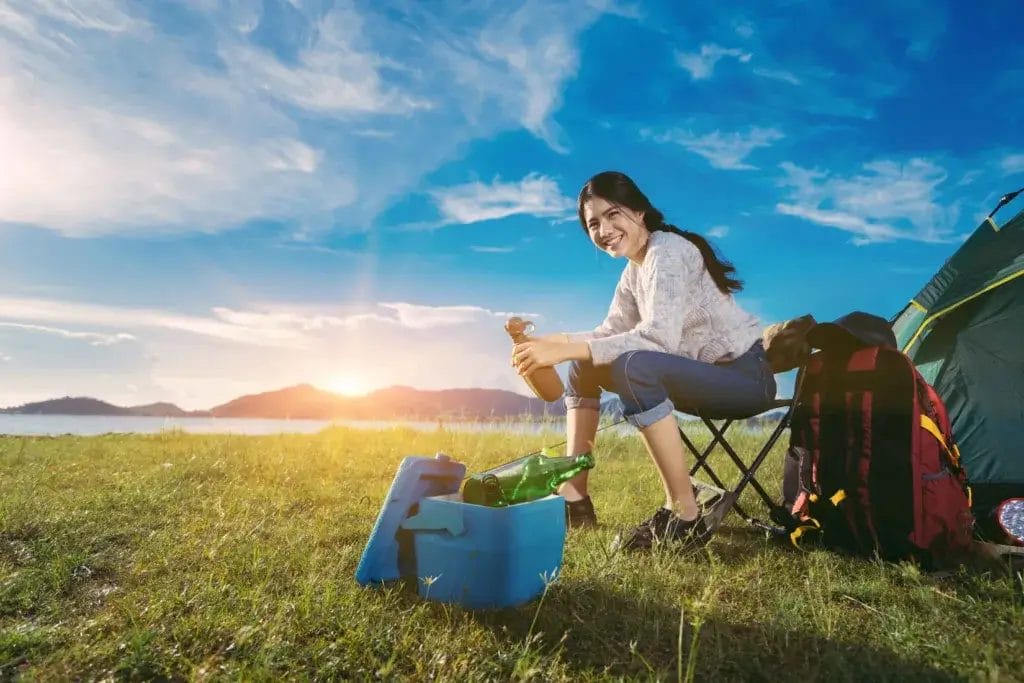
I know that feeling in my stomach when something’s just not right. It’s like my own built-in alarm system and I always trust it.
If I’m setting up camp and the place feels weird or the people nearby make me uneasy, I don’t hesitate; I just pack up and find somewhere else. There’s no need to explain myself or stick around hoping it’ll get better.
My gut instinct usually knows what’s up, especially in unfamiliar places. If something feels off, it probably is.
Listening to that inner voice helps me stay safe. Listening to your first instinct really can tell you everything you need to know.
I like to see leaving as just part of the adventure, a twist in my story, not a failure. Trusting myself feels empowering, even if it’s a little awkward at first.
I’m in charge of my own trip, and my intuition is a tool I was born with, so I try to use it with confidence.
9) Practice setting up your tent at home before heading out so you’re not fumbling in the dark.
Let’s be honest, setting up a tent for the first time, especially as the sun’s going down, is not my idea of fun. I’ve been there, hands freezing, wondering why there are so many extra poles and nothing looks like the picture on the bag.
Before I head out, I’ll do a trial run in my backyard, living room, or even at a local park. Getting familiar with my gear at home means I avoid any late-night surprises when I’m tired or the weather turns.
It’s actually kind of fun. I’ll put on some music, lay everything out, and figure out where each piece goes.
The more I practice, the faster and calmer I’ll be at the campsite, even if I show up after sunset. Practicing at home also helps me spot missing items or confusing parts.
Some guides recommend a home setup session as a key part of getting ready. I’ve definitely laughed at tiny tent stakes or celebrated my first solo pitch; sometimes it’s the little victories that matter.
10) Pack snacks that boost energy – trail mix with nuts, dried fruit, and a bit of dark chocolate works wonders.
When I’m out there, snacks can feel like little lifesavers. Instead of chips, I love packing trail mix with nuts, dried fruit, and a handful of dark chocolate.
Nuts give me protein and healthy fats, so I last longer between meals. Dried fruit like raisins or cherries adds natural sweetness and a quick kick of carbs.
And honestly, the dark chocolate is a morale booster, especially when the afternoon slump hits. I enjoy making my own mix at home – almonds, pumpkin seeds, dried cranberries, or even walnuts and dark chocolate chips if I’m feeling a bit extra.
If I’m pressed for time, most stores have high energy trail mixes ready to go. One simple trick: I keep a small pouch in an easy-to-reach pocket, so if hunger sneaks up mid-hike, I’m not digging through my whole pack.
11) Invest in a good-quality sleeping bag rated for the temperatures you expect, like the Marmot Trestles.

I’ve been there – lying awake at 2 a.m., teeth chattering, wishing I’d listened to my friend who swore by their sleeping bag. It’s tempting to grab the cheapest bag, but my comfort (and sanity) is worth more than a few bucks saved.
A good-quality sleeping bag is a trusty sidekick for any solo camping trip. Bags like the Marmot Trestles keep me cozy in all kinds of conditions.
They come in different temperature ratings, so I can pick one that matches my destination, no more shivering through chilly nights. I always check temperature ratings before buying.
Three-season sleeping bags work for spring, summer, and fall which is good for most climates. If I’m heading somewhere cold, I’ll go for a bag with a lower temperature rating, like the Marmot Teton 15°.
Reliable sleeping bags are easy to pack and tough against the elements. I wake up rested and ready for whatever the trail brings.
I always try mine out at home first – jump in, snuggle up, and see how it feels. Better safe than sorry, right?
Light, plush and packable, the Marmot Trestles Elite Eco 20 sleeping bag is a super-lofty synthetic mummy bag. Its 100% recycled fabrics and fill keep you warm even when water creeps in.
12) Keep a whistle and pepper spray handy for personal safety—they’re small but mighty confidence boosters.

Honestly, nothing beats the confidence I get from having a whistle and pepper spray within reach. They fit in my pocket, clip onto my backpack, or hang from a lanyard.
I’ve walked dusky trails with my whistle close by, just knowing I have it if I need to call for help. A loud whistle can draw attention even across a busy campground.
It can also be a deterrent if critters like raccoons are outside your tent. Blowing a whistle will usually scare them off.
Safety whistles can be heard up to 750 feet away, so they’re a quick way to get help. Some brands even make waterproof ones for rainy adventures—check out this high-decibel safety whistle.
Pepper spray is easy to use if I practice ahead of time. I always test it (following safety directions, of course) and keep it where I can grab it fast.
These small tools don’t just boost my safety, they give me peace of mind to hike and camp more freely.
The Original World's Loudest Whistle up to 142db Loud, Very Long Range, for Self Defense, Survival, Emergency uses
13) Opt for car camping at first and explore backcountry adventures only when you feel ready.
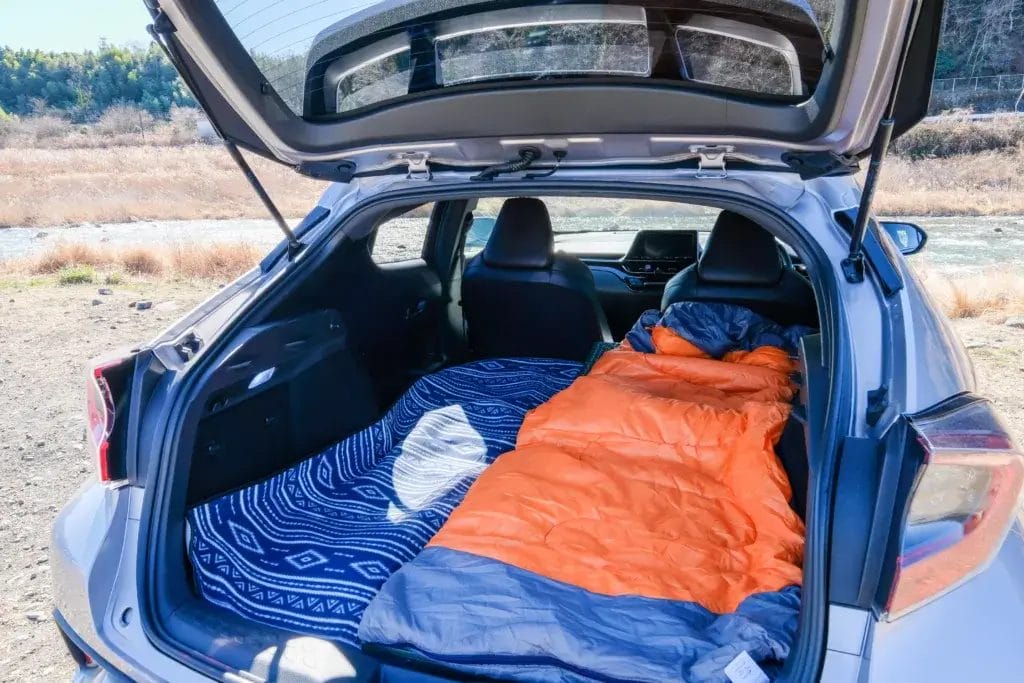
When I first tried solo camping, I chose car camping to make things feel less overwhelming. Having my vehicle right there meant extra storage and a safe retreat if the night got too spooky.
Honestly, my car’s backseat started looking pretty inviting when the campsite got noisy or the weather turned wild. With car camping, I can pack a few extra comforts, like my favorite blanket or even a real pillow.
There’s no shame in wanting a cozy night with snacks and music playing from the dashboard. Plus, having a car nearby means I can leave quickly if anything makes me uneasy.
Once I felt more confident sleeping outdoors, organizing gear, and handling little challenges, I started thinking about backcountry camping. Until then, car camping gave me the freedom to enjoy nature at my own pace.
If you want more reassurance, check out these solo car camping tips to feel safe. I say start small, one driveway-sized adventure at a time.
14) Don’t underestimate the power of a sturdy pair of hiking boots with good ankle support.
When I’m out exploring solo, nothing kills the vibe faster than rolling an ankle on a rocky trail. A sturdy pair of hiking boots gives me just enough confidence to push past roots and loose stones without that nagging “what if I twist something?” feeling in the back of my mind.
I’ve tried lighter sneakers for comfort sometimes. But on uneven ground, the difference is obvious.
Good ankle support in hiking boots won’t prevent every injury, but it definitely helps with stability, especially when I’m carrying a heavy pack or just feeling wiped out at the end of a long day.
Not everyone agrees about the importance of ankle support. For me, the right boots are as much about comfort and peace of mind as anything else.
I always break in my boots before a big adventure. Nobody wants blisters miles from camp.
15) Plan your route and download offline maps; cell service can be a sneaky no-show in the wilderness.
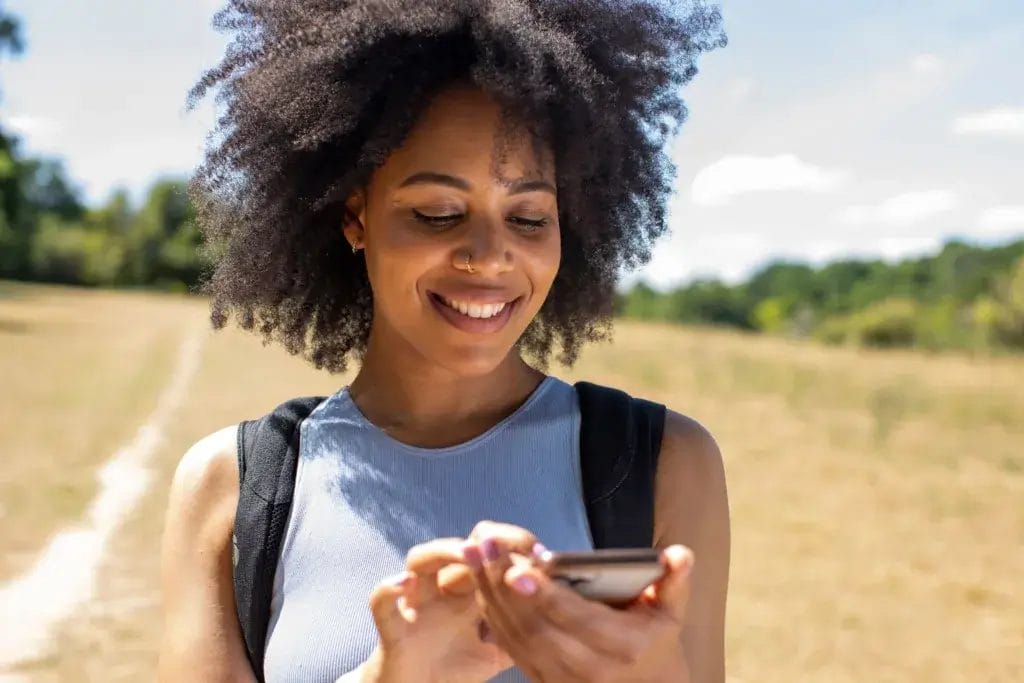
There’s nothing quite like realizing my phone has zero bars…right in the middle of a trail fork that doesn’t even show up on Google Maps. To avoid that stomach drop, I plan my route before I leave home.
When I pick a camping destination, I like to trace the roads and trails I’ll use. Google Maps makes it easy to search for landmarks and trailheads.
Downloading offline maps is honestly a lifesaver. Even if I expect to have a signal, remote spots love to prove me wrong.
The offline maps feature lets me keep navigating even when my phone is being stubborn. If you want to know how, this guide on using Google Maps offline is super helpful.
I still laugh about the times I tried to wing it…let’s just say the trees don’t give great directions. Download those maps – future me is always grateful.
16) Bring a multi-tool like the Leatherman Wave – it’s the Swiss Army knife of solo camping essentials.
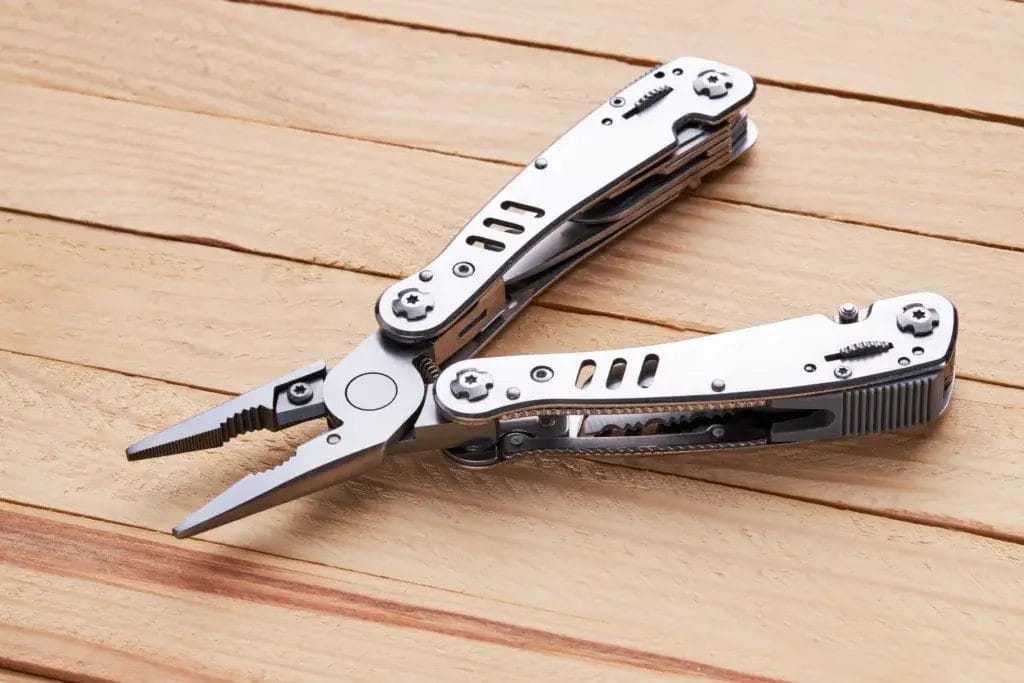
I’ve stared at a knot I tied “just to make sure it would hold,” wishing for something – anything – other than my teeth to help. That’s when a multi-tool like the Leatherman Wave feels like magic. It packs pliers, screwdrivers, scissors, a knife, and a bunch of other gadgets right in my pocket.
I use it for little fixes around camp, like tightening a loose screw on my stove or cutting twine for a clothesline. Once, I even popped open a stubborn can of soup with it. There’s something comforting about being ready for those “uh-oh” moments.
If the Leatherman Wave feels heavy, lighter options exist. Some folks like a classic Swiss Army-style multi-tool, but I love that the Wave lets me open tools with one hand, even when I’m juggling gear or snacks.
Honestly, it’s saved my butt more than once, so now it never leaves my daypack.
18-in-1 Full-Size, Versatile Multi-tool
17) Learn basic fire-building skills and always have fire-starting tools in a waterproof container.
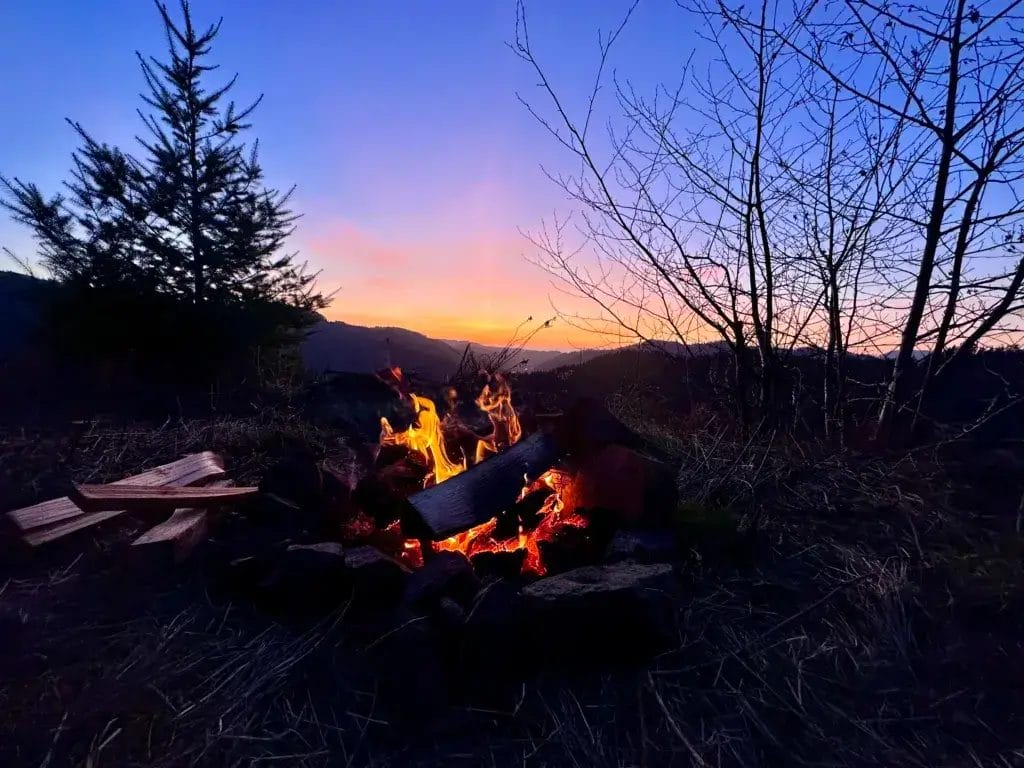
Campfires are the heart of any night outdoors, especially when I’m out solo. Lighting a fire myself, watching the first sparks catch, and feeling the warmth spread, it’s a real confidence boost. And, yeah, s’mores are a solid bonus.
I try to keep things simple. I gather small, dry twigs and leaves, then add bigger sticks as the fire grows.
Practicing this before heading out is key. Searching for instructions with cold fingers is no fun.
I always stash matches, a lighter, or a fire steel in a waterproof container. Sometimes I throw in cotton balls with petroleum jelly; they make lighting a fire way easier if the wood’s damp.
Need a refresher? I like step-by-step guides like this campfire basics article. Small skills like this help me feel prepared and make every solo campout so much better.
Each kit contains 12 rainproof and waterproof Hurricane Matches, 3 Sweetfire Fire Starters, and replaceable strikers.
Building Confidence For Your First Solo Camping Adventure

Gaining confidence for solo camping is all about taking small steps, facing your worries, and learning from every trip. We get braver as I pick up new skills and figure out what works for us out there.
Overcoming Common Fears Outdoors
Heading out alone can make our nerves jump, especially the first time. I worry about weird noises at night, random strangers, or getting lost. These fears are normal, and I can handle most of them with some prep.
Packing basic safety gear like a whistle, headlamp, and pepper spray helps me feel secure. I always share my plans and location with someone I trust so I can relax, knowing help isn’t far away.
Sometimes I fake a little confidence by practicing setting up camp in my backyard or a local park. The more I practice, the easier it gets.
Routines help too. One of my favorite tricks is a quick checklist before bed: double-check the tent zipper, put my shoes nearby, and keep a flashlight close. These little rituals calm me down when the woods get noisy.
Many women find extra peace of mind by reading safety tips for solo female campers. It’s worth a look.
Learning From Early Mishaps
Let’s be honest, something’s probably going to go a little sideways on that first solo trip. I couldn’t figure out how to use my camp stove, so I didn’t have dinner or coffee in the morning. It was frustrating, but honestly, I learned from it and it didn’t happen again.
If I leave the rainfly in the car once, I’ll never do it again. Big muddy puddle inside the tent? Now I triple-check for low spots. I try to laugh it off and remember everyone has an embarrassing story or two.
Once, I ripped my map trying to fold it and spent the rest of the night with “a puzzle adventure.” Not ideal, but hey, I survived and learned. Glad I had some duct tape.
Every mistake teaches us something for next time. By jotting down what worked (and what didn’t), we can turn every mishap into a tip to share.
There’s more guidance out there from folks who’ve learned the hard way, like this helpful guide for women camping solo. We don’t need to be perfect; we just need to keep learning and laughing as we go.
Navigating Campsite Friendships And Solitude
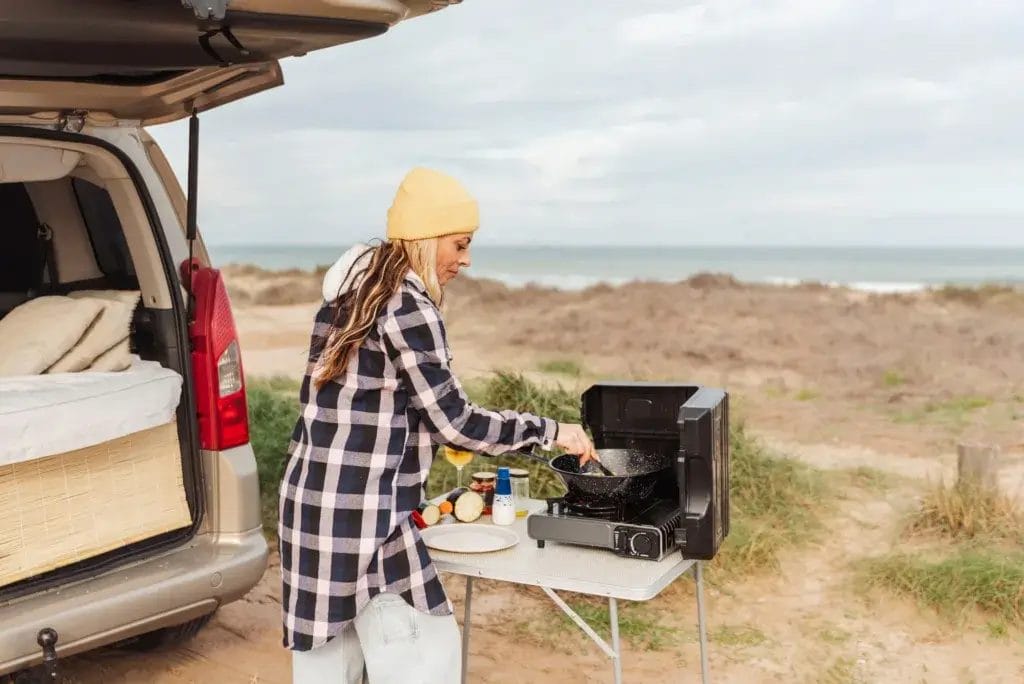
Meeting new people outdoors can be a real joy, but sometimes I just want to recharge alone. Balancing those two sides is a big part of solo camping for me.
Connecting With Fellow Campers Safely
I’ve had those moments at a campsite when someone nearby offers a friendly wave or an extra marshmallow. It’s nice to connect, but safety comes first.
When chatting with fellow campers, I keep personal details – like being alone or my exact plans – to myself. A simple “I’m meeting friends later” works wonders.
If I want to start a conversation, joining a campfire, swapping a snack, or sharing trail tips are easy ways in. I keep things light and friendly without oversharing.
For extra peace of mind, I might text a friend about new folks I meet or jot down vehicle descriptions. Sometimes I check online forums or talk to park rangers for area info and current campsite safety practices.
These habits help me stay outgoing and safe, striking a balance between being open and staying cautious.
Enjoying Peace And Your Own Company
There’s something uniquely comforting about listening to the wind or the gentle crackle of my campfire.
When I embrace solo time, simple joys stand out like a quiet sunrise, the steam rising from my morning tea, or scribbling thoughts in a journal while tucked in my tent.
To enjoy solitude, I’ll bring a favorite book, a nature sketchpad, or maybe a small craft project.
Little rituals, like stretching when I wake up or making a special breakfast, help me savor the quiet and create a sense of home in the wild.
Spending time alone outdoors builds my confidence.
It’s not just about being by myself; it’s about figuring out what I actually like, what I’m curious about, and how capable I am.
If loneliness creeps in, I remind myself that solitude in nature is a gift – a time for self-reflection, personal growth, and tapping into my wisdom.
Frequently Asked Questions
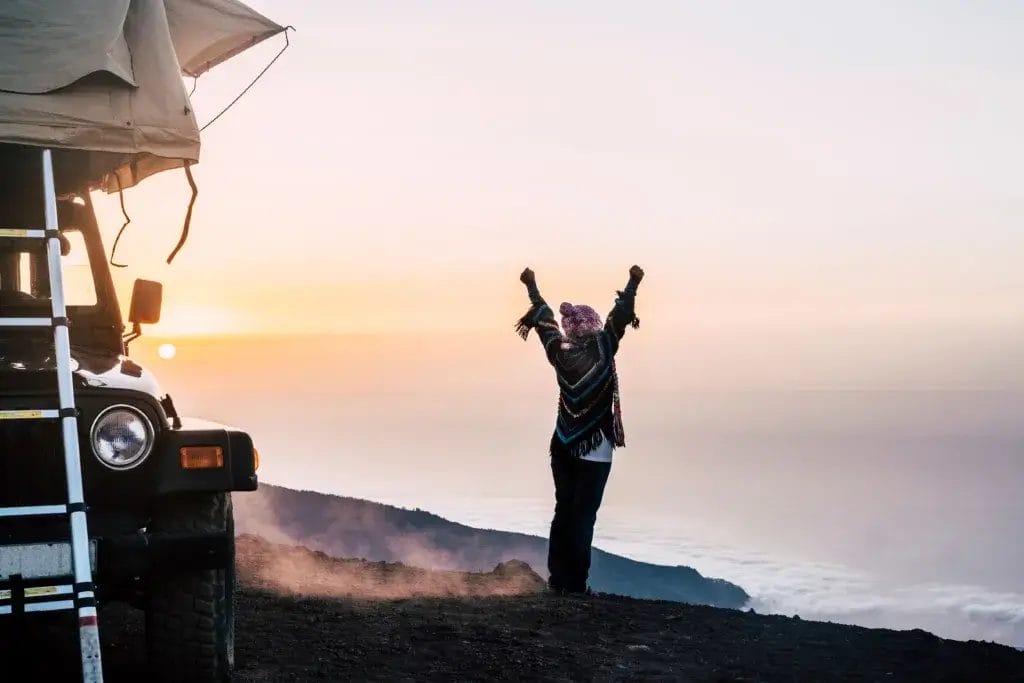
When I planned my first solo camping trip, I focused on feeling safe, prepared, and confident in unfamiliar outdoor spaces.
Choosing gear that makes sense, getting to know the area, and staying connected with friends or family all help have a good experience.
What are some essential safety tips for women who camp alone?
I always let someone reliable know my exact camping spot, check-in times, and when I expect to return.
It could be a quick text or sharing my location with a friend – peace of mind is priceless.
Camping where others are nearby, like a busy campground or a site close to the road, makes those first solo nights way less intimidating.
Carrying self-defense tools like pepper spray or bear spray helps me feel empowered.
Can you share some practical advice for solo female campers to feel secure in the wilderness?
I try to set up camp before dark and usually arrive in the early afternoon so I can look around and get comfortable.
I always bring a headlamp so I’m never fumbling in the dark, and I always bring extra batteries.
Having a compact first-aid kit nearby, stashed in my daypack, is just reassuring.
I also keep trail mix, a whistle, and a lightweight emergency blanket handy – just in case something unexpected happens.
What should a woman bring when embarking on a solo camping adventure?
I swear by a portable phone charger to keep my devices powered up, especially if I’m using GPS or taking lots of photos.
Reliable navigation tools, lightweight snacks, and sturdy footwear always make my packing list.
Blister pads and antiseptic wipes are always in my first aid kit right from the start.
Dressing in layers lets me adapt to weather changes; nothing ruins a solo adventure faster than being cold and damp.
How can a solo female camper confidently handle wildlife encounters?
I like to read up on the wildlife in the area before heading out.
If I’m in bear country, I carry bear spray and store food properly – either in a bear canister or hung from a tree – which eases a lot of anxiety.
I never leave food or scented items in my tent and always clean up my cooking area before dusk.
Making a bit of noise while walking around camp helps avoid startling critters. It might sound silly, but it really works!
As a woman, how do I choose the safest campsite when camping alone?
For beginners, campgrounds near ranger stations or with plenty of other campers can help you feel more relaxed and sleep better.
I look for spots with decent cell service, benches, and signs of recent use – no need to be a trailblazer the first few times out.
Avoiding secluded spaces, especially if you are feeling unsure, will help keep you more comfortable.
If a site feels off for any reason, I trust my gut and move on. That’s always the right call.
Could you provide insights on the best practices for solo female car camping?
Car camping lets me keep my supplies close and gives me a safe place to retreat if needed. Parking near other campers or under a streetlight just feels a lot safer than being off on my own at the edge of a park.
I like that I can lock my car quickly- it’s like having a little safety bubble. I always double-check that my windows and doors are locked before I call it a night.
Packing a privacy curtain or some kind of window cover is a simple trick that helps me sleep better and not feel so exposed. If you want more ideas or checklists, I’ve found some helpful tips on sites like this solo camping safety guide.






